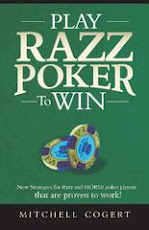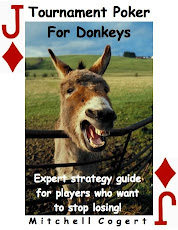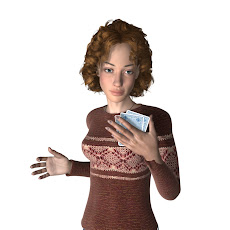 Image via Wikipedia4 Main Poker Playing Styles and How to Beat Them
Image via Wikipedia4 Main Poker Playing Styles and How to Beat ThemThere are all sorts of playing styles when it comes to poker. While you can cast poker players as a mixture of tight-loose/passive-aggressive, I think it is more complex.
Here is what I have found while playing at my $15-$30 limit game and some thoughts on how to beat these players:
1.
Props and Pros:
The toughest players you will find at a poker room. Why? It's their profession.
The Props are easy to find since they wear a badge to identify they are working for the card room. While the Pros are harder to spot you can pick them out by how they are interacting with the dealers and staff and other poker players--the familiarity is evident.
These players are very similar in that they "think they know" all the moves in the game. The Pros tend to play more hands than the prop players as they want some action and believe they are far superior than everyone else.
Both groups share the same weakness: Habits. Each one of these players have developed tendencies that even they are not even aware of. These habits can be on how they place a bet when they are strong versus when they are weak. Or, it may be how they always bet on paired flops or how they auto-bet after everyone has checked. One thing is for sure--expect a more aggressive playing style that is meant to create fear, uncertainty and doubt into your mind.
How to beat them: Study their betting patterns. Look for tells on how they place their bets, and even facial expressions. Take a shot by raising and check raising them, to see how they respond. Usually, it will slow these players down and get them to fold with a bet on the next street.
2. Attention Seekers:
There are two types of attention seekers. One type stands out because they love to talk. While the other type is quiet. Yet, both type of players want to be noticed for the bad beats they can put on their opponents.
The loud ones will mix things up in the cards they will play and when they raise and re-raise. They can get lucky and win a lot of money in a hurry, and, of course, they can lose a lot of money just as fast. When you find the guy who loves to talk, you've found an attention seeker.
The quiet ones like to stand out in the same way, but without the loud chatter. They will win pots with rags and that perfect runner-runner.
How to beat them: You have to realize that your swings will be larger going against these guys. They bluff more often, and can get paid off big when they pick up premium starting hands. Are they going to put bad beats on you? Yes. The key is not to lose your composure, as long term they are going to give you their money. Be patient.
3. Station bettors:
There are two kinds of station bettors:
-Calling stations: If there is any hope in winning they will call all the way to the river, regardless of what action has taken place on any street. Short and long term a calling station is a losing player. I don't know how they can afford to lose so much money.
-Betting stations: They are similar to calling stations, except that if they have an opportunity to bet first they will. And they will fire on every street with any draw or any pair all the way to the river. Oh, and if the you turned one of these players into a calling station, they don't feel comfortable in that situation. So, you can expect that raise or check raise on the turn or river to get you to fold.
How to beat them: Overall, you can't bluff out these players.
Calling stations: Bet for value. Don't raise without the goods. And make sure you can beat a low pair before betting on the river.
Betting stations: Call with as little as a low pair. If a scare card comes out on the turn and a betting station ignores it, it is a sign they are not that strong.
4. Thoughtful and careful players:They tend to be recreational players who have read that tight-aggressive is the way to win at poker. They tend to bet their hands, and call with draws. They may have a move or two at the poker table, but are vulnerable to raises and check raises. Of course, since they don't play poker for a living, they don't like to fold. The result is that if they call you on the turn when raised, they will lean to calling you on the river.
How to beat them:
Raising these players will slow them down. So go for that free card with a raise. Being aggressive on the flop or river can get these players to fold, especially if the board is coordinated enough. But, if they call you on the turn, expect that river call.
Note: I have found one or two players who are Flush Lovers; that is, they, will play any two two suited starting cards. For some reason, they relish in that rare win when their Q-6 suited either makes a flush or two pair on the river. The good news: Over time they will give you their money.
I hope this helps. Any other styles?
 Image via WikipediaPoker Quiz: Guess What Your Opponent is Holding
Image via WikipediaPoker Quiz: Guess What Your Opponent is Holding











